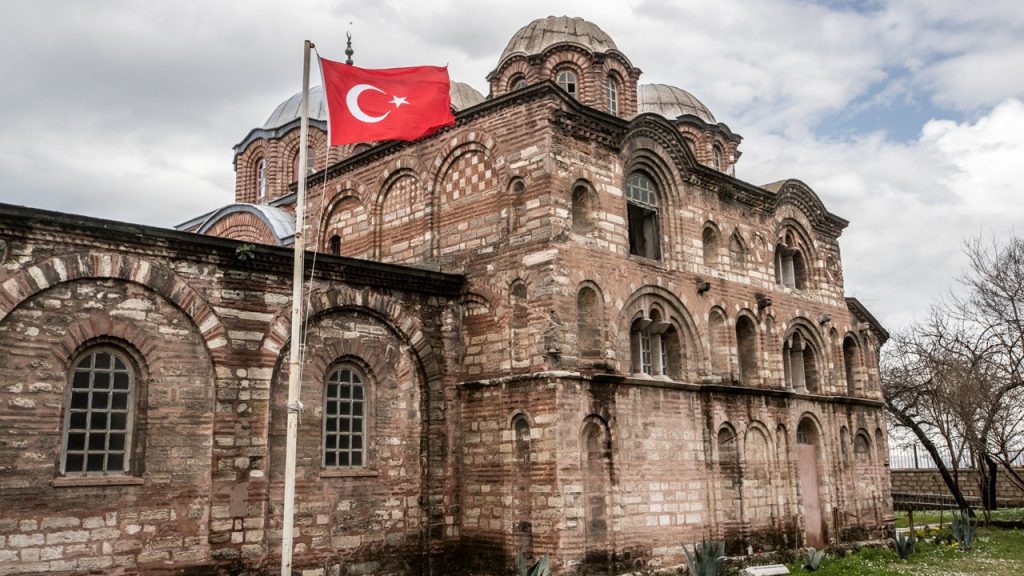Turkish President Recep Tayyip Erdoğan officially opened the former Byzantine church in Istanbul, The Church of St. Saviour in Chora, as a mosque, despite criticism from neighboring Greece. This conversion comes four years after the structure was designated as a Muslim house of prayer. Greece and other countries had urged Turkey to protect important Byzantine-era monuments, as both The Church of St. Saviour in Chora and Hagia Sophia are listed as U.N. World Heritage Sites. The decision to turn these structures into mosques drew praise from Muslim faithful but criticism from some international entities.
The Church of St. Saviour in Chora, known as Kariye in Turkish, underwent restoration before its formal launch as a mosque. The structure had functioned as a museum for decades before it was ordered to be converted into a mosque, similar to Hagia Sophia’s journey from a church to a mosque. Turkish President Erdoğan remotely presided over a ceremony marking the opening of The Church of St. Saviour in Chora and other recently restored structures from a conference hall at his palace complex in Ankara. The televised event included prayers from the first worshippers who expressed their joy and gratitude at being able to pray in such a significant place.
The Church of St. Saviour in Chora is situated near Istanbul’s ancient city walls and is renowned for its intricate mosaics and frescoes. The structure dates back to the fourth century, with its current form dating to the 11th-12th centuries. It served as a mosque during the Ottoman rule before being transformed into a museum in 1945. The decision to convert it back into a mosque was met with criticism from Greece, accusing Turkey of “insulting the character” of this World Heritage Site. The conversions of Hagia Sophia and The Church of St. Saviour in Chora were seen as moves to consolidate conservative and religious support for Erdoğan’s ruling party amid economic challenges.
In 2020, Turkish President Erdoğan joined hundreds of worshipers for the first Muslim prayers in Hagia Sophia in 86 years, disregarding international criticism and calls for the monument to remain a museum. As many as 350,000 people participated in the prayers held outside the structure. The decisions to revert Hagia Sophia and The Church of St. Saviour in Chora back into mosques have been viewed as steps to strengthen support from the conservative and religious factions that back Erdoğan’s ruling party. Despite some opposition and concerns raised by other countries, particularly Greece, the conversions have resonated positively with many within Turkey’s Muslim community.
The conversions of important Byzantine-era monuments like Hagia Sophia and The Church of St. Saviour in Chora into mosques have stirred discussions and differing opinions on preservation, heritage, and religious freedom. While Turkey’s moves have been celebrated by Muslim worshipers and supporters of the ruling party, they have faced criticism from certain international entities. The journey of these iconic structures from churches to mosques and then back to mosques underscores the complex history and cultural significance of these sites. The transformations have ignited debates on balancing religious practices, historical preservation, and international relations, highlighting the delicate balance between respecting diverse cultural heritages and maintaining religious identities. The conversions have drawn attention to the intertwined nature of politics, religion, and cultural heritage in Turkey and beyond.


